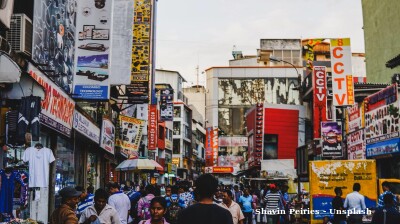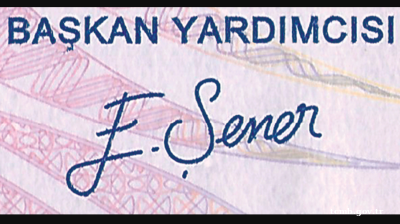Inflation appears to be under control in Uzbekistan and to have peaked in Georgia and Armenia, but with prices still rising in Kazakhstan the regulator is ready to raise rates “as much as necessary,” the governors of the central banks of Uzbekistan, Kazakhstan, Georgia and Armenia told bne IntelliNews during the Uzbek economic forum in Samarkand on November 4.
Uzbekistan new at the game
Georgia and Kazakhstan were both much quicker to liberalise their monetary policy and are at least a decade ahead of Uzbekistan, which was closed to change under the former president, Islam Karimov. Armenia too was fast to react to mounting inflation pressures and began hiking rates much earlier than most of its peers in December 2020. Now the central bank in Yerevan is reaping the benefits as the country boasts a real interest rate of 1%, unlike many of its peers, as the regulator has got ahead of the curve.
Today Uzbekistan is probably the least well equipped to deal with spiking inflation as it only started to introduce inflation rate targeting in 2016 after President Shavkat Mirziyoyev took over and introduced a comprehensive monetary policies at the Central Bank of Uzbekistan (CBU).
Since then, the regulator has been working on building creditability amongst the population as the regulator had never attempted to anchor inflation rate expectations before. CBU Governor Mamarizo Nurmuratov says considerable progress has been made, but a lot more work needs to be done.
Compared to the rest of the region, the Uzbek regulator has done a good job of controlling inflation, which fell from an artificial pre-reform rate of about 14% to a low of 10%, but rose again to the current 12.2% during the current crisis period. (chart).
The Uzbek central bank responded to the burgeoning inflation in the first quarter of this year with a sharp rate hike to 17% that effectively prevented inflation gathering momentum and allowed it to ease the prime rate again to the current 15% in July that has left the effective real interest rates at a positive 2.7%.
“Inflation targeting is still very new and we are still building a track record with the population,” Nurmuratov said during a plenary session at the forum in Samarkand on November 5.
The CBU has set an inflation target of 5%, but hit by multiple shocks the plan has been thrown off track. In response, the CBU has set an intermediate and more realistic short-term inflation goal of 10% in order to continue to build its creditability with the population, “but of course it is not easy to do so in the current conditions.”
The CBU has been actively reaching out to the population with a social media campaign to explain its policies and establish a relationship. At the same time, the central bank has been investing into talent, hiring the best-in-class young economists, as well as building up its analytical skills to improve forecasting.
Nurmuratov argues that inflation targeting cannot be done to the exclusion of the wider reforms that are going on in the economy and has integrated his plans with those of other ministries, especially the Ministry of Finance, as there is a fiscal component to inflation as well as a monetary one.
Given the extreme non-monetary nature of the current inflation surge, which is driven as much by food, energy and supply chain disruptions, Deputy Finance Minister Odilbek Isakov said in a separate session that his ministry was conscious of its role in the battle to keep inflation under control by using fiscal means as well as monetary.
“It is not possible to completely implement effective inflation targeting during the reform process, so our efforts must be integrated into the reform process to establish a market competition environment so that the tools we need can be made effective,” Nurmuratov said.
The CBU plans have progressed steadily, starting with the liberalisation of foreign exchange in 2018. Then the new legal framework for the operation of the central bank, including the guarantee of its independence, the monetary and payments systems were established in 2019-2020. The central bank then began to seriously target inflation in 2020, but the effort has been knocked sideways by the polycrisis that began the same year with the appearance of the coronavirus.
“We introduced an interim inflation target of 10% and [had] hoped to end the year with inflation at 8%, but while we were hoping to reach our initial 5% inflation target this year that deadline has now been pushed out to 2024,” Nurmuratov said.
Like the other central bank governors, Nurmuratov is conscious of the need to strike a balance between controlling inflation and at the same time promoting growth.
“If we can bring inflation down then the quality of life in the country will improve and that will also improve the growth of the economy,” Nurmuratov said. “But this is heavily dependent on the success of structural reforms that are being carried out now.”
Kazakhstan battle not over
Kazakhstan has also been battling inflation, but the regulator was much slower to start hiking rates, only making its first 25bp in August 2021. It only got aggressive with a 325bp hike in February this year when inflation really started to soar. But the regulator has yet to tame the inflation beast.
The National Bank of Kazakhstan (NBK) has put in several more aggressive hikes since then to bring the prime rate to the current 15%, but prices were growing by 17.7% in October, leaving the real interest rates at -2.7%, with no sign that the growth in prices was near to topping out. (chart)
“We are still adjusting to the shock and the jump in inflation,” said Galymzhon Pirmatov, Governor of the NBK. “Inflation must not become entrenched.” Pirmatov went on to say that while the economy has weathered the storm well so far, the government’s failure to build strong institutions has left it vulnerable to shocks.
“It highlights the need for more structural reforms and building institutions in both the public and private sector so that countries can be more resilient to shocks,” Pirmatov said. “Weak institutions have cost our country in the long term.”
Like the Uzbeks, Pirmatov believes that attracting more foreign investment would help contain inflation and the Georgian experience of a strengthening lari, due to the influx of Russian refugee cash, bears out that belief.
“There are many factors and the external shocks that are driving inflation and all the countries of the region are feeling it but we continue to manage inflation and will not allow it to spiral out of control,” Pirmatov told bne IntelliNews at the roundtable in Samarkand.
“Last week we hiked rates by 150bp and in December we will probably need to tighten further. At the end of November we will update our forecast, but inflation will probably peak in the first quarter of 2023, so we are not done with the tightening,” Pirmatov told bne IntelliNews.
There is one last monetary policy meeting in Kazakhstan in December and Pirmatov told bne IntelliNews that he will do “whatever is needed” at the meeting to “keep inflation under control.”
Georgia looking for the golden mean
Georgia has had a bit of luck in its fight with inflation: it turns out that the flood of Russian refugees fleeing Putin’s war is deflationary. The National Bank of Georgia has been hiking rates steadily since the start of the year to the current 11%, but inflation appears to have peaked in the second quarter and is currently at 11.2%, leaving the real interest rates more or less flat.
“We see a risk that inflation will become entrenched,” Koba Gvenetadze, Governor of the National Bank of Georgia (NBG), told bne IntelliNews on the sidelines of the Uzbek Economic Forum in Samarkand. “Inflation in Emerging Markets is higher, as the share of food in the price basket is higher than developed countries. In addition, there is a new factor in the current geopolitical uncertainty.”
The huge influx of Russian migrants that first arrived after Russia invaded Ukraine in February and a second more recent wave escaping the mobilisation have actually pushed Georgia’s inflation down. To a lesser extent the same thing has happened in Uzbekistan and many Russians have opened Uzbek bank accounts, which they can use both at home and in Europe despite the SWIFT sanctions.
“Migration has played a very important role. The large foreign exchange inflows to Georgia from other countries [have] strengthened the currency and helped contain inflation,” Gvenetadze said.
The strengthening of the currency has helped but it is also offset by the migrants driving up demand by 1.5% of GDP, Gvenetadze says, and more specifically rents have doubled in the capital as well as the stronger economic growth driven by increased demand that has not helped in fight against inflation. Georgia is a small country, so the arrival of so many migrants has made a noticeable difference to the economy.
“We need to address all these pressures, otherwise inflation will become entrenched,” Gvenetadze concluded. “We need to find a golden mean between all these factors.”
Georgia is in the best position of all the countries of the Caucasus and Central Asia, as inflation is almost under control, albeit still at high levels. But Gvenetadze says that thanks to the uncertainty he is ready for anything and will act if there are more shocks. (chart)
“Emerging markets are helping to fight inflation and bring it down,” Gvenetadze told bne IntelliNews. “Our inflation has peaked at 13.9% and is now falling because of the flow of immigrants, capital transfers and remittances. That means the currency has appreciated – the lari is now one of the strongest currencies in the world.”
Gvenetadze said that they are watching the UN Food and Agriculture Organization (FAO) index closely, which also shows that food prices are starting to fall, which is more good news.
The NBG has tightened enough to make real interest rates real, “but there are remains the possibility of upside surprises,” Gvenetadze told bne IntelliNews. “If there are surprises then we are ready for further policy increases and will prolong that as long as is necessary.”
Armenia
“Armenia has long had low inflation thanks to is strong institutions and transparent policies, but the creditability of the central bank is earned during its reaction to shocks,” Nersoso Yeritsyan, the deputy governor of the Central Bank of Armenia, said at the same roundtable.
Inflation was low until the coronacrisis began and took off on the third quarter of 2020, rising to a peak of 10.3% in June this year. But since then, inflation has begun to fall moderately after a consistent series of rate hikes staring in December 2020 from 4.25% as the Armenian central bank was fast to react to the rising inflationary pressures. The latest hike was in October, bringing the prime rate to 10.5% and leaving the country with real interest rates of 1% and slightly ahead of the curve, unlike many countries in the region. (chart)
Yeritsyan says that Armenia has developed a comprehensive framework that includes strong forecasting analytics, as “we are not targeting today’s inflation but the forward rates.”
The Armenian central bank (CBA) was targeting inflation at under 2% in 2020, but like everyone else has had to reset its goals.
“We have had to react to the supply shocks and act to ensure that inflation remains anchored. In 2020 the CBA rates were 6.25% and rose to 10% in 2020. Now the goal is to reduce the rates and bring inflation back down to 4%,” Yeritsyan said.
In March inflation peaked and began to fall again but disruptions in the market have caused a setback.
“The crisis has changed the way we work. The uncertainties mean we have switched to a risk-management modus without guidelines or benchmarks. We call it the F+ mark II, where we use forecasting and risk management policies to deal with the uncertainties.”
Features

Ambition, access and acceleration – Uzbekistan’s Startup Garage opens free academy for entrepreneurship
Aim is to train 50,000 young founders by 2030.

Ukraine’s growing energy crisis promises a cold and dark winter
Since the summer, Kyiv has changed tactics. Given the almost complete failure of Western oil sanctions to curb Russian oil exports, it has been targeting Russian oil refineries. The Kremlin has struck back, targeting Ukraine's power system.

Russia, China sign off on Northern Route shipping deal to slash global freight times
Russia and China have signed a landmark agreement to develop and commercialise the Northern Sea Route (NSR), after Beijing tested the route last month, that could slash Europe-Asia cargo transit times and challenge the primacy of the Suez Canal.

Sri Lanka’s economic escape
Sri Lanka’s recovery over the past year reads like a narrow escape rendered into a cautious, albeit unfinished success story.




